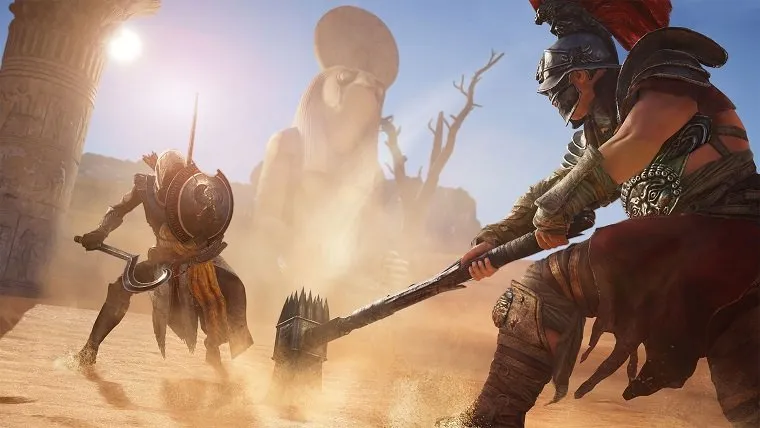When developers create games which attempt to capture the essence of another time period, they often ignore important historical details in favor of gameplay. For example, both EA and Activision were found to have done this in Battlefield 1 and Rome: Total War, respectively. Some players will be looking for the same thing when Assassin’s Creed Origins arrives next week, but there is one thing they can be sure of going in: the hieroglyphs are accurate.
Promotional material for Assassin’s Creed Origins have made ample use of hieroglyphs to help drive its Ancient Egyptian theme home to viewers. Of course, since most players from a mainstream audience would be unable to tell the difference between gibberish, filler and authentic hieroglyphs, Ubisoft would have little reason to actually make them legit. Fortunately, Claire Manning, who studied Middle Kingdom hieroglyphs as her honors subject at university in Australia, is someone who would be able to tell the difference and took it upon herself to decipher what the material says.
Progress has been pretty slow- mostly because it looks like the ad only shows a part of the message. So I found the full picture online. pic.twitter.com/TbXnFU1Wx0
— Claireleesi (@Clazzaranius) October 14, 2017
Though Manning notes that there some filler, she eventually found that there is indeed a message being told by the hieroglyphs — a clear indicator that Ubisoft did its homework on that end.
“A lot of the words seem to be acting as a filler- it looks like the graphic designer was trying to fill space for a lot of this,” she starts. “But there’s clearly a message in here related to the game. They’ve definitely done their research.”
So, what does it say? On one part, Manning found the phrase “Everything may be,” which fits nicely with The Creed’s maxim: “Nothing is true; everything is permitted.” In addition, she came across the phrasing “We work in the dark, to serve the light,” which was added to the creed by Ezio in Assassin’s Creed 2.
It’s cool to see that Ubisoft made a serious attempt at taking hieroglyphs from the Middle Kingdom during Queen Cleopatra’s reign and actually including them in Assassin’s Creed Origins. Of course, it’s unlikely that everything else in the game will be as historically accurate. Then again, it doesn’t really need to — there are simply some liberties developers need to take in order to offer a fluid and engaging experience to players.
Assassin’s Creed Origins is set to arrive on Oct. 27 for the PlayStation 4, Xbox One and PC.











Published: Oct 16, 2017 02:52 pm